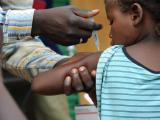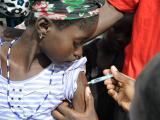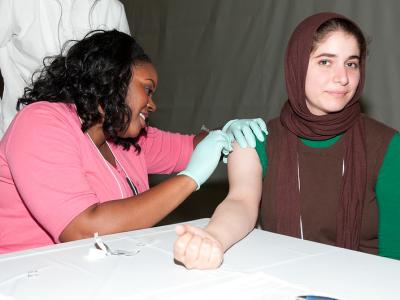Apr 8, 2004 (CIDRAP News) – More than 800 donated blood units went unused because of West Nile virus (WNV) infection in 2003, but enough infected blood escaped detection to cause six WNV cases in blood recipients, according to the Centers for Disease Control and Prevention (CDC).
The six cases in 2003 compare with 23 reported in 2002. The 2002 cases led to the rapid development of nucleic-acid amplification tests (NATs) for WNV in blood.
From June until early December of 2003, NATs were used to screen about 6 million units of blood for WNV, leading to the removal of at least 818 viremic donations from the blood supply, the CDC states in the Apr 9 issue of Morbidity and Mortality Weekly Report.
Blood was screened in "mini-pools" of samples from 6 or 16 units, depending on the test kit used, the CDC says. When a mini-pool tested positive, samples of individual donations from that pool were tested. In addition, some blood banks serving areas with WNV epidemics screened all blood units individually for limited periods. Donors of infected blood were asked to provide follow-up blood samples, which were tested for WNV-specific antibody.
Complete information was available for 811 of the 818 donors of viremic blood. After they gave blood, six donors (1%) fell ill with WNV encephalitis or meningitis, and 137 (17%) had West Nile fever. But 654 donors (81%) remained healthy, according to the report. This is in line with previous reports suggesting that about 80% of WNV-infected people remain asymptomatic, the CDC says.
Public health agencies reported 15 cases of WNV illness that were suspected to be linked to blood transfusions. Another eight suspected cases were in recipients of blood components derived from "low-level viremic donations" that were found during special retrospective testing of blood units from mini-pools that had tested negative, the CDC reports.
After investigation of the 23 cases, six were classified as definitely or probably transfusion-linked, 11 were found to be unrelated to transfusions, and three were inconclusive. Three cases were still under investigation as of Mar 27.
The six people with transfusion-associated WNV illness ranged from 13 to 82 years of age (median, 63), according to the report. Four had WNV encephalitis, one had West Nile fever, and one, who was critically ill, did not have any illness consistent with WNV, despite confirmed infection.
The CDC says people with asymptomatic WNV infection have the virus in their blood for a median of 6.5 days and represent the largest risk group of blood donors. Although screening with NATs has made the blood supply safer, the six cases identified in 2003 indicate that "blood components containing low levels of virus might escape detection and that at least some of these might be infectious," the article states.
It says that screening of pooled blood will continue to detect most infected blood donations, but prospective testing of individual donations may be used again this year in regions where mini-pool screening shows high infection rates. Shortages of lab equipment and personnel and the higher false-positive rate of individual testing, as compared with mini-pool tests, could temporarily squeeze the blood supply in those areas, the CDC predicts.
CDC. Update: West Nile virus screening of blood donations and transfusion-associated transmission—United States, 2003. MMWR 2004;53(13):281-4 [Full text]
Sep 18, 2003, CIDRAP News story, "West Nile test makes blood supply safer this year, CDC says"

















